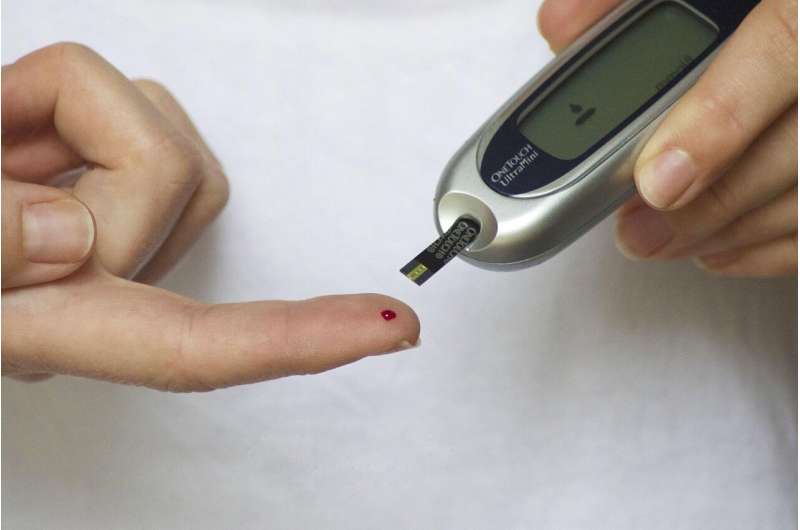Study: Preventing type 2 diabetes in young people is possible without medication

Ten minutes of physical activity a day or less screen time is all it takes to delay the onset of type 2 diabetes and slow its development in youth, according to a study led by Université de Montréal clinical associate professor Dr. Mélanie Henderson, a pediatrician, endocrinologist and epidemiologist at UdeM's affiliated children's hospital, CHU Sainte-Justine.
在加拿大人波形的肥胖率正在上升r the age of 19 and are reaching alarming levels. With the number of children with type 2 diabetes expected to quadruple in Canada over the next few decades, Dr. Henderson's research offers a glimmer of hope by quantifying how physical activity and sedentary behaviors affect key diabetes indicators.
"With just 10 minutes of moderate tovigorous physical activityper day, we see a decrease in the risks associated with the development of type 2 diabetes in at-risk children," said Soren Harnois-Leblanc, an UdeM Ph.D. in epidemiology and first author of the study, which was published in November inLancet Child Adolescent Health.
"Reducing sedentary time by an hour a day offers similar benefits," said Dr. Henderson. "Screen time, whether it's television, video games orsocial media, is particularly harmful, but it's also easier to avoid than transportation-related sedentary time, for example. Not all sedentary habits have the same impact on cardiometabolic health."
Changing one's lifestyle habits can be tricky, however. The body has built-in mechanisms to maintain its highest weight, making it very difficult to lose weight. That's why it's so important to act early with children and adolescents having a family history of obesity, the researchers say.
"There's an urgent need to develop and implement obesity prevention policies that are aimed at promotingphysical activityand reducing sedentary behaviors to prevent diabetes in vulnerable populations," Dr. Henderson said. "We need to target health across the board," added Harnois-Leblanc.
A total of 630 Quebec children with a family history of obesity were monitored over a seven-year period in three cycles: ages 8–10, 10–12 and 15–17. Several tests were used to measure key diabetes indicators including insulin sensitivity, insulin secretion and blood glucose levels. Physical activity and totalsedentary timewere measured by accelerometry, and leisurescreen timewas assessed using a self-reported questionnaire.
More information:Soren Harnois-Leblanc et al, Estimating causal effects of physical activity and sedentary behaviours on the development of type 2 diabetes in at-risk children from childhood to late adolescence: an analysis of the QUALITY cohort,The Lancet Child & Adolescent Health(2022).DOI: 10.1016/S2352-4642(22)00278-4





















